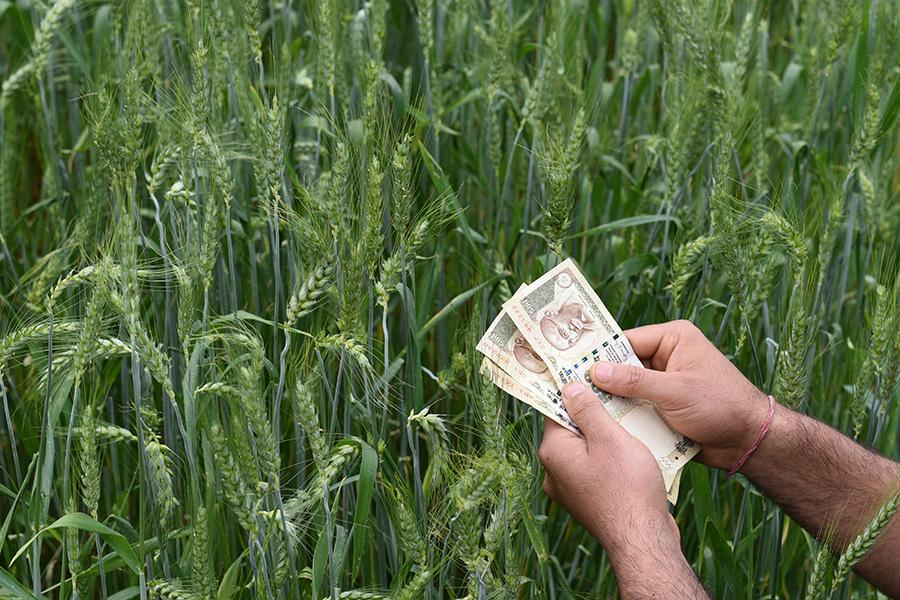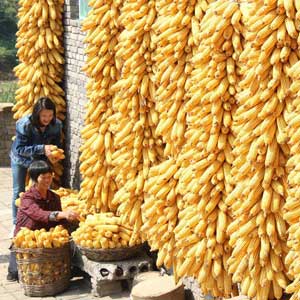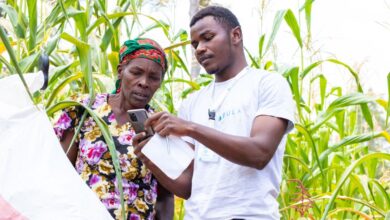Making Finance Work For Agriculture in Africa [Part 1]

- Introduction
- Agriculture as a wealth sector
- Agricultural imports and exports
- Agriculture’s contribution to employment in Africa
- Unlocking agriculture value chains
- Taobao Villages?
- The profile of a typical e-commerce shop owner
- Where to go from here
Introduction
On Tuesday 9th, June 2020, Co-Founder of GetFundedAfrica (GFA Capital) – Debo Omololu, participated as a Guest Panelist at the Agric Investment Summit alongside Onyeka Akuma (CEO FarmCrowdy).
These types of corporate events now hold particular significance when we consider recent developments in the global economic landscape, with the almost default shift in focus to “other” sectors such as Agriculture, because of the plunge experienced by the Oil Industry. The Agric Investment Summit , focused on areas such as making agricultural money and how business people can get funding for investment projects.
Many say that agriculture is a proven path to prosperity. No known region on earth has successfully developed a diverse, modern economy without initially establishing a successful foundation in agriculture. This fact is critically true for Africa where in the 21st century, close to about 70% of the population is involved in agriculture as smallholder farmers working on parcels of land that are, on average, less than 2 hectares. ((AGRA), 2017)
Considering this agriculture, undoubtably remains Africa’s surest bet for growing economies and creating steady employment mainly for the youth. Most indications show that Africa as a continent is ready to take-off. The forecasts for African agriculture look favourable, despite the recent slow-down in economic growth across much of the continent mainly due to the COVID-19 pandemic. The African food market continues to grow with World Bank estimates showing that it will be worth US$1 trillion by 2030 up from the current US$300 billion. (Chahed, 2018)

Due to the increasing rise in population experts believe that the demand for food will double by 2050. These trends, connected with Africa’s food import bill, which is approximated at a staggering US$30–50 billion, shows that an opportunity exists for small scale farmers, whose output and yield per acre rise considerably through digital resources and agritech.
The process by which an agri-food system transforms over time from being subsistence-oriented and farm-centred into one that is more commercialized, productive, and off-farm centred is according to latest reports starting to take place in Africa. Food systems across the African continent are responding to rapid urbanization, rising incomes and changing diets.
Agricultural value chains are becoming more urbanized and consumer driven, with a premium on quality and food safety. (Hazell, 2018) These changes are leading the way to many new growth opportunities within Africa’s food system. Agricultural productivity and employment continue to grow, and an abundance of value addition and employment is being created along value chains in the form of agricultural trade, farm servicing, agro-processing, urban retailing, and food services. As of 2018, 40–70% of the food costs to urban Africans arrived in the post-farm gate segments of the supply chain, conceiving more opportunities for youth employment.
Agriculture as a Wealth Creator
There is an increasing need for Africans to begin to look at agriculture as a business. “The food and beverage processing industry is the largest manufacturing industry in Canada with annual sales worth $112.4 billion. It accounts for 16% of total manufacturing shipments and for about 2% of the national GDP.
The food and beverage processing industry is also the largest manufacturing employer and provides jobs to 285,100 Canadians” According to the President of the African Development Bank (AfDB), Africa spends $35 billion annually importing food items & this is expected to rise to $110 billion by 2025.
Download GetFundedAfrica’s e-Guide to fundraising for start-up’s Here
Agricultural imports and exports in Africa
During 2005–2012, the volume of world trade had been growing continuously except during the 2008–2009 crisis. World trade then stagnated until 2014 before falling significantly until 2016.4 African imports and exports developed in a similar way with a stronger amplitude, particularly on the export side.

Figure 1: Value of trade index—African exports and imports (all products) and world trade 2005-2017
The value of African agricultural trade between 2005 and 2017 is presented in Figure 1. It shows an upward trend for both imports and exports, with a more prominent increase in imports, while the agricultural trade deficit was stable between 2005 and 2009 (except for 2008). The African trade deficit in agriculture then grew until 2011.
It stabilized from 2011 to 2014, then decreased significantly. Indeed, the value of agricultural exports stabilized from 2011 while the value of imports decreased from US$100 billion in 2011 to US$80 billion in 2017, reducing the trade deficit by half from roughly US$40 billion in 2011 to US$20 billion in 2017.
Agriculture’s contribution to employment
The agricultural sector has a pivotal role in employment in Africa, employing more than half of the total workforce. While its importance to the rural population is well documented, recent surveys suggest that agriculture is also the primary source of livelihood for 10% to 25% of urban households. National census data indicates that the number of people employed primarily in agriculture has increased over time (Yeboah and Jayne, 2015).
As a consequence of rapid population growth, Africa has a young population, which will result in millions of people entering the labour force annually over the next decade (Losch, 2012; IMF, 2015). Given current employment growth rates, less than half will be absorbed into gainful non-agricultural employment and even under more favourable policy and growth scenarios, the share rises to two thirds at most (Fine et al., 2012).

Consistent with employment trends by the Groningen Global Development Centre (2013), the World Bank reports that family farming will remain the single largest source of employment in the coming decade (Filmer and Fox, 2014). Thus youth participation in agriculture will largely depend on the viability of family farming. Innovative ways of facilitating youth participation in agriculture have the potential to drive widespread poverty reduction among youths and adults alike.
It is still important to note that a coherent and integrated approach that addresses challenges related to education, land access and tenure, access to financial services, access to markets, access to green jobs and involvement in policy dialogue has the potential to make the agricultural sector more attractive to young people, providing the additional push that may be needed for them to enter the sector is still very important in Africa. (FAO, CTA and IFAD, 2014).
Unlocking Agriculture Value Chains
Manufacturing is a critical part of the contribution made by agriculture to the modern economy. In today’s world, not too many people take home a sack of grain and mill it themselves to make bread; they rely on manufacturing to prepare products for home use. Africa, needs to leverage technology and market research to understand the global agricultural value chains and finance its stake in these global value chains to achieve growth.
Taobao Villages?

E-commerce has enabled rural villagers to sell agricultural products, handicrafts and manufactured goods by opening stores on platforms such as Alibaba Group’s Taobao. AliResearch, Alibaba’s research arm, defines a Taobao Village as a village that generates RMB10 million or more in e-commerce sales annually and have 100 or more active online shops on Taobao operated by local residents.
As of August 2019, there were a total of 4,310 Taobao Villages in 25 provinces, where 250 million out of China’s total 564 million rural villagers reside. The total sales generated by Taobao Villages – and Taobao Towns, which are larger-scale rural townships that deploy the same Taobao Village model – amounted to RMB700 billion ($100 billion) in the 12 months ending June 2019.
What a typical Taobao village looks like
Rural areas with satisfactory infrastructure and reliable access to markets tend to be most conducive to e-commerce. More than half of the people in Taobao villages use the Internet. The internet is a key resource for news, entertainment, online shopping, work, and education. Most people, especially in e-households, perceived their social status as equal or higher compared with five years ago. They also believe they will have equal or even higher social status two years in the future.
Statistics at a glance:
780 Taobao Villages
200,000+ active online shops
17 provinces and municipalities
71 Taobao Towns
25 Taobao Village Clusters
The profile of a typical e-commerce shop owner

E-households are richer than other households. Business income, including e-commerce income, is the main income source of e-households. E-shop owners are younger and more educated than the rest of the population in the village. Many e-shop owners are returned migrants and women.
A typical e-shop – Most e-shops are small. E-shop workers in Taobao villages have wage levels equal to or higher than workers in urban private industries. For e-shop owners, the top three barriers to develop e-commerce are the high cost of online advertisement, tough competition, and lack of skills. Access to finance also remains a key constraint. Most e-households have never borrowed to cover operation costs, or only borrowed from household members, friends, and relatives.
Where to go from here
E-commerce is showing a promising role in alleviating poverty and improving people’s lives. Anecdotal stories show that people can get rich and have better lives after participating in e-commerce. Many cases also highlight that access to an online market allows people in rural areas to enjoy the convenience, variety, and similarly low prices available in big cities. There are also anecdotal stories that many young and talented people, including women, have returned to their hometown in rural areas, earning as much or more than they did as migrant workers in the cities, while at the same time enjoying more family time. Many have become e-commerce leaders in their home villages and serve as role models for others.
To be continued…………..
Download a copy of GFA’s Guide To Fundraising For African Start-Ups
“GetFundedAfrica is a technology-based, business information platform operated by Afriscaper Research & Consulting Limited with a mission to reduce barriers to funding for African businesses. GFA matches investor ready, African & African-Diaspora owned companies with global investors, leveraging market research, industry data and news aggregation“
Check out our weekend Feature: GFA’s Business Journey: Pitching To Win
Are you an entrepreneur? Share your story with us and get featured on our platform send us an email nichole@getfundedafrica.com




